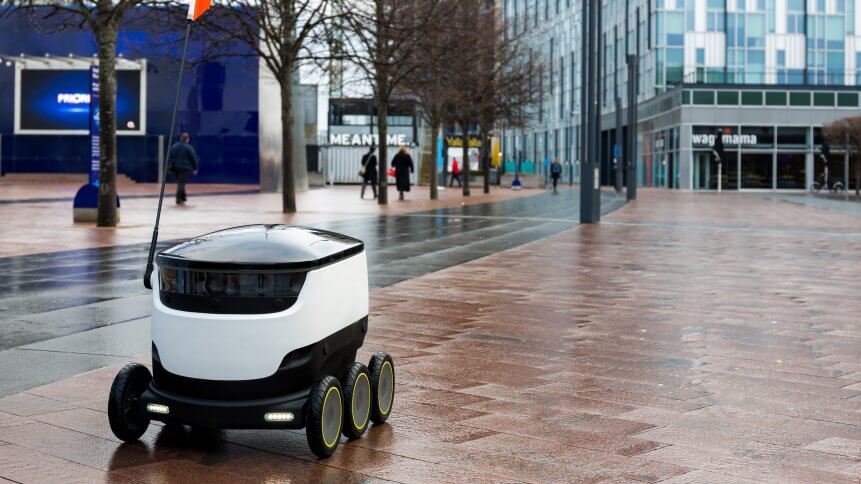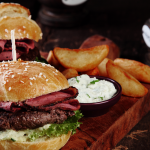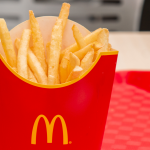Five technologies changing the future of fast food

When White Castle’s founders Walter Anderson and Billy Ingram created the concept of serving hamburgers with the “same quality, in every chain, everytime”, it got the attention of Wichita’s residents, but it didn’t go big until Richard and Maurice McDonald introduced the “speedee service system” in 1948. The “assembly line” kitchen setup they introduced ultimately gave rise to the modern fast-food setup we know of today.
71 years later, the fast-food business has grown to be one of the biggest food services business in the world, worth up to US$570 billion globally in 2018. Part of this is thanks to new technologies like timed fryers, auto grills, and computerized order management systems that allow food to be prepared even faster than before.
Fast food service will change again
Now with more new technologies disrupting almost every sector, the fast-food industry is in for another revolution. Here are five emerging technologies that are poised to drive fast-food industry innovation come 2020 and beyond.
# 1 | Kitchen automation
When it comes to asking ‘Will robots take my job?‘, for fast-food workers in the years to come, the answer may well be ‘yes’. The fact is, while US hospitality industry accounts for one out of every eight jobs available in the States, it suffered from more than 800,000 unfilled positions as of April last year.
Automation may be the answer, and it’s already taking place in some restaurants worldwide. In the US, CaliBurger’s robot Flippy proved it could flip burgers faster than humans while maintaining consistent quality at the same time. The same approach could be applied to other repetitive tasks fundamental to fast-food preparation.
# 2 | Social media
With more people now on social media, fast food companies should leverage it creatively to drive more sales. Facebook, for example, now allows users to order meals from restaurants using the integrated function on their Facebook pages, like Papa John’s.
It’s made possible by utilizing SaaS software to link these restaurant’s Facebook pages to their POSM systems. One SaaS company that’s leading this initiative is Exit41.
Apart from allowing Facebook users to order their favorite grub, they could also share their ordering tab with others, providing an additional chance for brand reach, and even the possibility of going viral.
# 3 | Robot deliveries
While firms such as Deliveroo and Uber Eats have disrupted the takeaway delivery market— powered gig workers on bikes— robot deliveries could take things even further.
Starships Technologies is one such company leading the charge. In order to get from A to B, the UGVs (unmanned ground vehicles) are packed with a sensor suite, which includes ten cameras, GPS and inertial measurement units. They are also equipped with microphones and speakers so they can communicate with their customers.
Currently, the robot is only able to deliver within a two-mile radius, but more studies are being carried out to allow it to deliver to a larger radius.
# 4 | Contactless payment
With more people using Google Pay, Android Pay and other forms of e-payment worldwide, contactless payment will soon make ordering fast food easier and more novel via self-service kiosks.
These kiosks only need to display QR codes (for e-wallets) or enable NFC payment for those using cards. Users can also be rewarded with points and bonuses after they make their payment. McDonalds is already rolling this out globally. By 2020, the fast-food giant hopes to have self-service kiosks in all their franchises in the US— and more countries will soon follow suit.
Should it get even more advanced, who knows, maybe a restaurant will be able to remember your favorite order just by scanning your face.
# 5 | Tabletop ordering tablets
In the future, waiters may be called “servers” instead when tablets take over the waiting job for them. Placed on customers’ tables, these tablets are linked to the restaurant’s POSM system which then passes the orders directly to the kitchen.
Applebee’s is one such restaurant already using these tablets to service their customers. The tablet allows diners to play games while they wait for their orders. In a similar vein, McDonald’s US$300 million purchase of Dynamic Yield has allowed it to develop the tech to offer its customers what’s been described by TechCrunch as an ‘Amazon-like’ experience at the Drive-thru menu board.
YOU MIGHT LIKE

Technology is transforming the food service industry
Humans are still needed
Despite the potential to transform fast-food restaurants as we know them with a combination of these technologies, right now humans are still needed to ensure customer service is at its best.
While the food may be ‘fast’, people still crave a human experience when it comes to service. Would your food still taste as good if you knew it were made by a robot?










